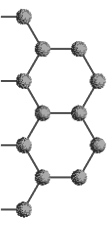ABSTRACT
The intimate connection between magnetism and superconducting pairing plays a central role in determining the occurrence of unconventional superconducting states. In this talk, we demonstrate that the two-dimensional superconductivity emerging at the heterointerface between the perovskite band insulator KTaO3 (KTO) and the ferromagnetic insulator EuO can serve as a distinguished new member of this category. For both the (110)- and (111)-oriented KTO interfaces, the superconducting transition temperature Tc and the upper critical field Hc2 determined from the electrical transport measurements exhibit unusual current-direction dependence. In the case of EuO/KTO(110), Tc and Hc2 are both higher with current applied along the in-plane [001] direction as compared with current along [1-10]; whereas in EuO/KTO(111) heterostructure devices, Tc and Hc2 become higher when the bias is applied along [11-2] and are lower along [1-10], with a concomitant breaking of the three-fold in-plane rotational symmetry. Such unusual directional dependence of superconductivity is revealed to be closely linked to the proximity effect of the ferromagnetic EuO overlayer, as it mostly occurs in devices showing concurrent normal-state anomalous Hall effect and hysteretic magnetoresistance. Complementary scanning SQUID and second harmonic resistance measurements point towards the presence of two distinct Berezinskii-Kosterlitz-Thouless transition temperatures at the interfaces. We propose that these perplexing experimental results most likely imply the spontaneous emergence of quasi-one-dimensional superconducting stripes running along [001] and [11-2] directions at the EuO/KTO(110) and (111) heterointerfaces, respectively; phase coherence of Cooper pairs is established in these stripes at a higher temperature than the rest of the interface, highlighting a peculiar “dimension reduction” phenomenon invoked by the interplay between superconductivity and magnetism in two dimensions.
BIOGRAPHY
Ziji Xiang is an associate professor of experimental condensed matter physics working at the University of Science and Technology of China (USTC). He received his B. Sc. from USTC in 2010 and his Ph. D. from Hefei National Laboratory for Physical Sciences at the Microscale (HFNL), USTC in 2016. He worked as a postdoctoral researcher at University of Michigan, Ann Arbor from 2016 to 2021 and joined the faculty of HFNL in July, 2021. His major research interests lie in unconventional superconductivity and emergent quantum phenomena in strongly-correlated electron systems, particularly f-electron materials. His research focuses on the experimental exploration of transport and thermodynamic properties of correlated quantum matter.
Date & Time
Venue
Chair

